[Atari, Avalon Hill]

Avalon Hill games are like a box of chocolates. You never know what you are going to get. Sometimes, you have V.C. or Close Assault. And sometimes you have Conflict 2500 or, well, Panzer-Jagd.
Panzer-Jagd is a game of small-scale tactics set in the Eastern Front, with the player controlling the Germans. It includes two game modes: Panzer-Jagd in which the player must destroy a Soviet force with a combination of Panzer III and Panzer V (aka Panthers), and the one I am going showcase: Panzerun.
The “run” in Panzerun is probably from “run away“, because in this mode the player keeps moving from East to West for as many sectors as possible before their forces are fully annihilated – the game is endless. The units available to the Germans are the infantry and once again the Panzer III and the Panzer V. The Panzer IVs are absent, if I trust the box art they have all been stolen by the Soviets. Clearly, the war is not going well.

The game starts with all my forces aligned in the East, plus a few at the bottom. To move to the next sectors, I must eliminate all the Soviet forces in this one. Optionally, I can then take the city (in pink), which will prompt the Soviets to stop fighting and try to flee West
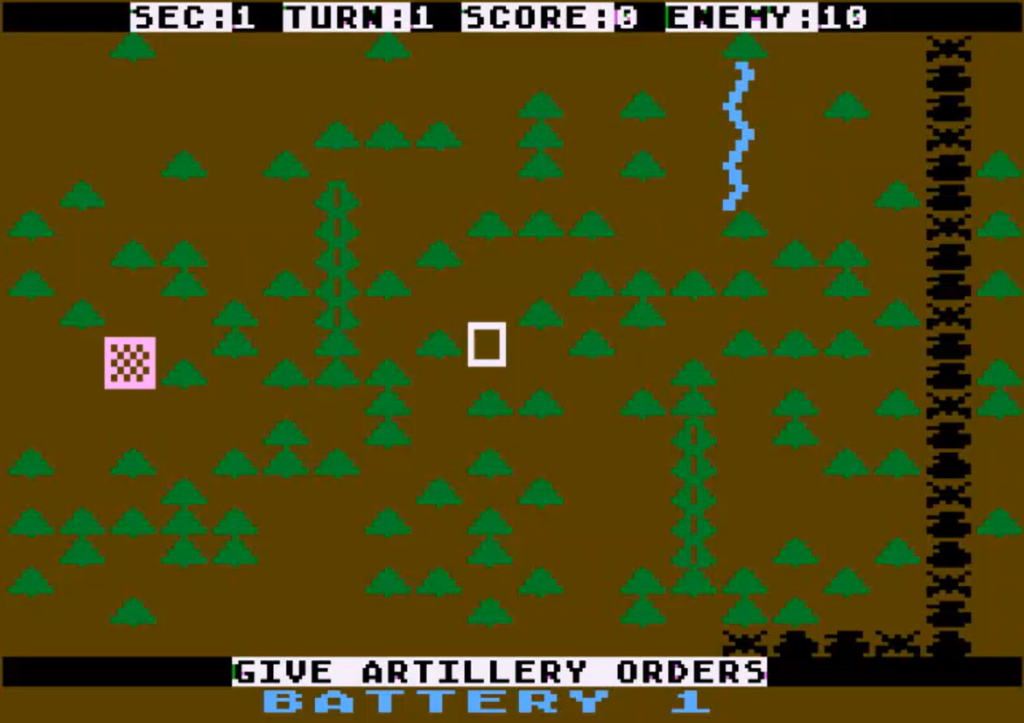
I advance the units I like the least – my infantry – to see if they can detect some enemies by the age-old practice of being shot at:
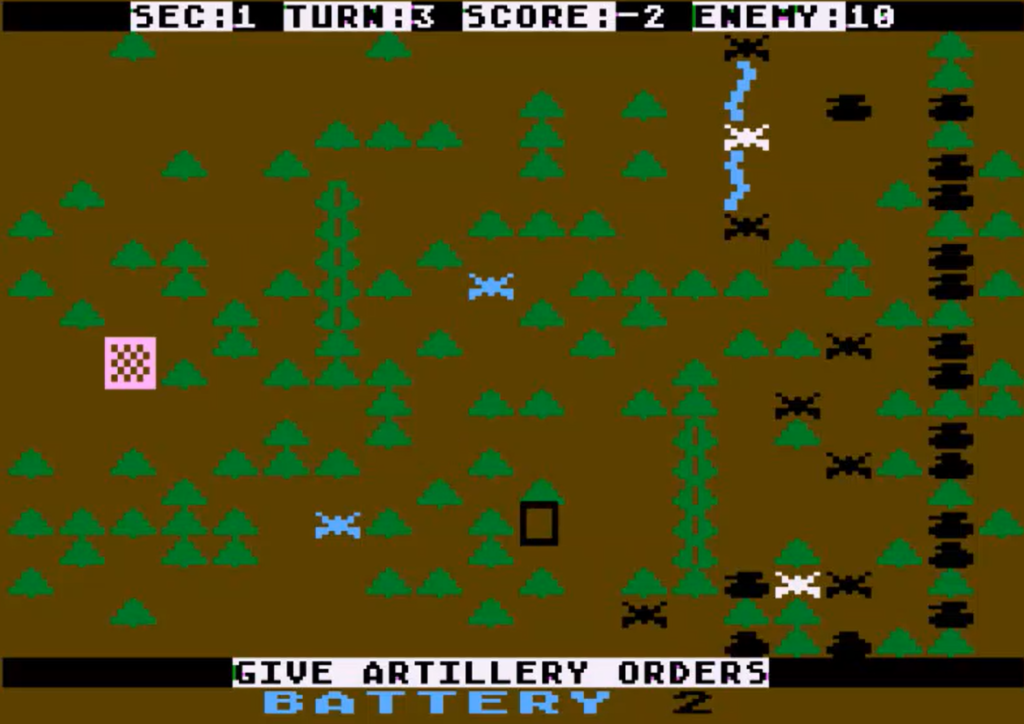
A game turn is divided in 4 phases:
- Artillery orders: The player can point two locations which will be shot at in the following turn,
- Fire orders: Each unit can shoot at a target it sees. Shooting at random trees just in case is not allowed,
- Movement orders, note that units that are shooting cannot also move,
- Turn resolution,
A bit bored by the absence of enemy contact, I advance all my tanks. Of course, that’s exactly the moment where some Soviet guns start shooting:
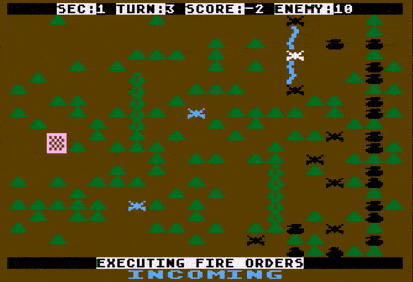
I have detected two enemy camouflaged in the trees : an AT gun in the North and a T-34 in the South.
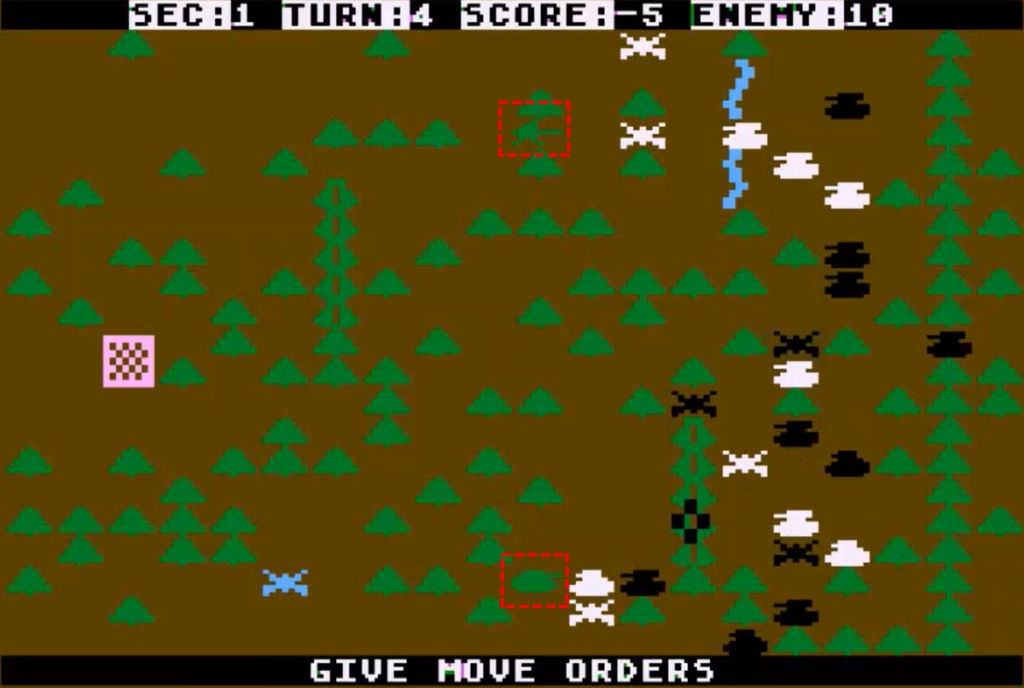
Whatever can shoot at those targets shoots, but that’s not a lot of firepower: I cannot shoot through trees or allied units, and the few units that can shoot (an obsolete Panzer III and some infantry) don’t destroy their target.
I need to bring my tanks forward. Meanwhile, the Soviets can just shoot at me as I approach, and more enemies are detected:
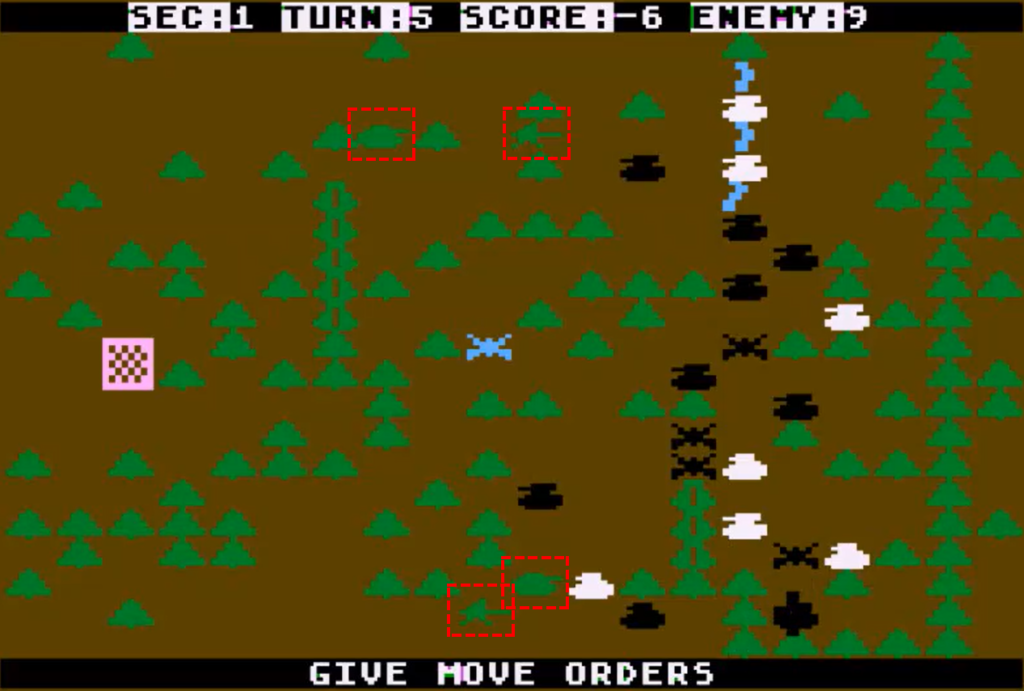
Eventually, I overrun the Soviets, destroying one gun and one tank. The rest fall back. Of course, I received some losses: the Soviets always shoot first during turn resolution!

I pursue and destroy more Soviet units, with yet more losses, including to artillery which falls on my tanks with uncanny precision.
Eventually, I find the last Soviet unit and destroy it…

This moves me without transition to the next sector, with a lot fewer units and no closer to home.

Long story short, after some more losses I manage to take the city, forcing all the Soviet units to leave their position. I destroy them easily, before they can flee and reinforce the next sector:
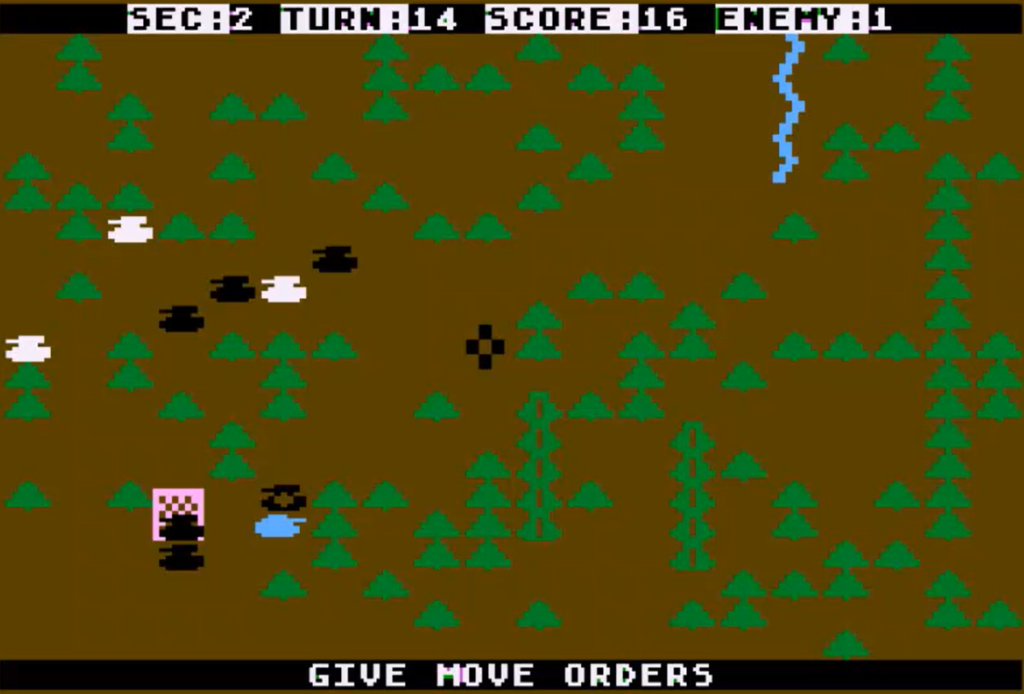
When I start the third sector, my force is a shadow of its former self:
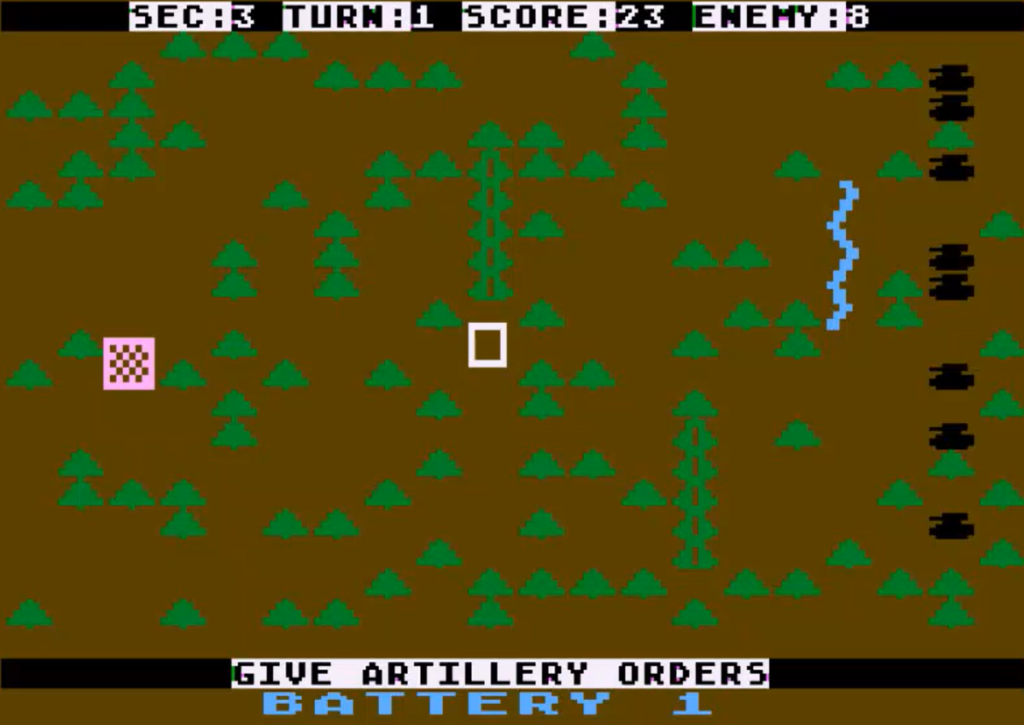
The Soviets match me in number, but they have a defensive position, first shot and homing artillery. I don’t stand a chance, and my force is soon reduced to two tanks:

In a last-ditch effort, I manage to take the city, forcing the Soviets to retreat! This means I just have to wait for them to cross the map (they stop shooting) and I will move to sector 4…
… but I forget the drone-aided artillery, and my last tank is destroyed from above:

Good! This game is finally over.
Ratings & Reviews

Panzer-Jagd, by Richard W. Scorupski, published by Avalon Hill, USA
Genre: Small-scale tactics
First release: February 1984 on Atari and Commodore 64
Average duration of a campaign: 45 minutes for the one above, some reviews claim up to 4 hours!
Total time played: 1.5 hours
Complexity: Easy (1/5)
Final Rating: Totally obsolete
Ranking at the time of review: 103/118
Panzer-Jagd is another of those mysterious Avalon Hill titles with no information to be found on the development. The author, Richard W. Skorupski, also released a (lost) educational game called Divex in 1984, and then disappeared forever.
Panzer-Jagd was released on Atari and Commodore 64, in each case with both a disk and a cassette version. The Atari disk version included the Panzer-Jagd game mode in addition to the “Panzer-Jagd Panzerun” mode found in all versions. The not-Panzerun Panzer-Jagd is a simpler game (no artillery, no city, two types of units by side only) which pits 18 German tanks against 11 Soviet units. It has in my view the immense advantage of ending in either a victory or clear defeat, but the flaw of being even more barebone than the main game.
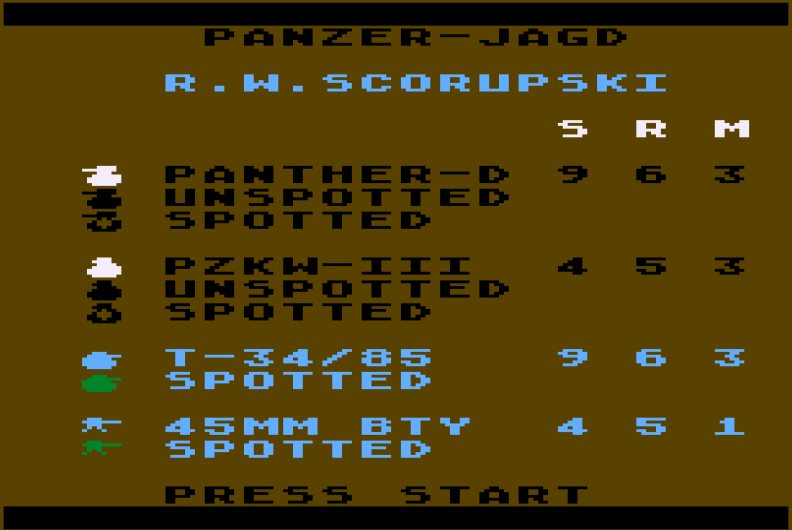
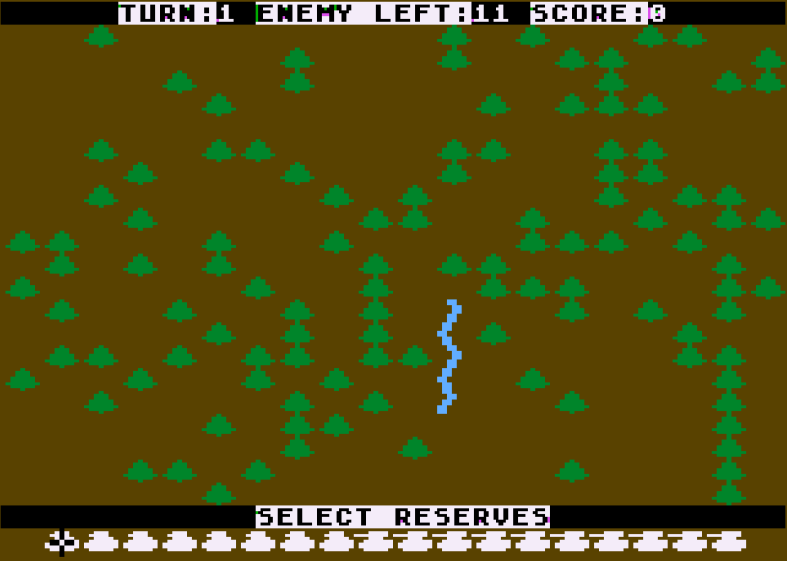
My review will be for the Panzerun game mode.
A. Presentation: Very poor. Note that officially Panzerun is about doing a decoy attack (“create a diversion which will soak off some of the enemy resistance facing the main offensive“) but I prefer my version where it is a desperate and ultimately doomed attempt for German units to break through a Soviet encirclement.
B. UI, Clarify of rules and outcomes: Poor – Not the worst game in this regard, but a few critical questions are left unanswered (how does the game calculate who shoots first or whether a shot penetrates the enemy armour?)
C Systems: Terrible. I love small-scale tactics and I can forgive a lot in this genre, but this game never clicked.
The game fails spectacularly at showcasing combined arms. All units follow the same rules, which makes infantry with their speed of 2 and their range of 1 only useful as cannon fodder. Units often can’t properly support one another because a forest tile stops 100% of the shots, and careful positioning can only do so much. Units don’t “face” any direction so you cannot flank or attack the enemy on its weak side.
Due to the paucity of the tactical layer, the game is essentially about playing stale hide-and-seek. I do not doubt that there are some ways to perform much better than I did, in particular by moving in a way that minimizes “detection by being shot at” compared to “detection by being next to the enemy”, but I do not find it interesting, nor organic, nor realistic. In any case, it won’t save the life of your scouts: the AI (almost) always shoots first, and if you can shoot it then it can shoot at you. The pinpoint accuracy of enemy artillery is just the cherry on top of this sundae of frustration.
D. Scenario design & balancing: Terrible. Full disclosure: I am generally not a fan of endless mode and I much prefer to have a clear win/loss condition. Still, I sometimes indulge in endless games (I even played a lot of pinball in my youth) so I can see the appeal when the conditions are there. Alas, when you have so little to work with (3 types of unit by side, 4 types of terrain), levels need careful hand-design, not bland procedural generation.
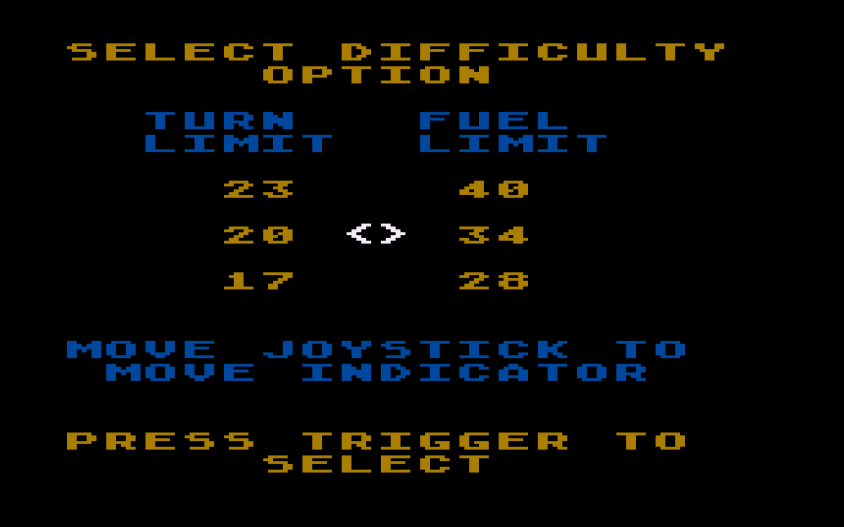
As for the “not-Panzerun” scenario, it is trivially easy, and even described as “tutorial” in some reviews.
E. Did I make interesting decisions? I guess I could have, but I am not going to carefully weigh my decisions to grind longer in a game I don’t like just to maximize a score.
F. Final rating: Totally obsolete. I don’t find anything deserving of praise in Panzer-Jagd; even Armor Assault was better!
Comparing Panzer-Jagd with VC (the other hide-and-seek “tactical” game) it is easy to see why I loved the latter so much more. VC had:
- clear victory/loss conditions,
- different unit behaviours,
- a manageable number of units, instead of 20+,
- a real way to guesstimate where the VCs hid,
- reactive hostiles (they would convert the neutrals if you waited), which kept the situation fluid,
- organic time pressure (the more you waited, the more neutrals the VC would convert),
- first shot, but this was not overpowered because you had to take risks due to the time pressure,
Panzer-Jagd would have been better with any of those elements, and possibly good with all of them. Instead, all it did was emphasize how much in advance VC was in terms of game design.
Reception
I could find almost 10 reviews Panzer-Jagd, and they were all across the board, but generally positive. I was particularly puzzled by the ones of Paul Backer for Computer Fun (April 1984) : “The game can take up to four hours to play, every minute of which can be very exciting“. Similarly, I am not sure what makes Edward Bever of Antic (August 1984) state : “the experience is a credible recreation of armored tactics on the Eastern Front“. In June 1984, Commodore Power/Play even went so far as to allocate 4 full pages to the game, though that specific review never claims the game is great.
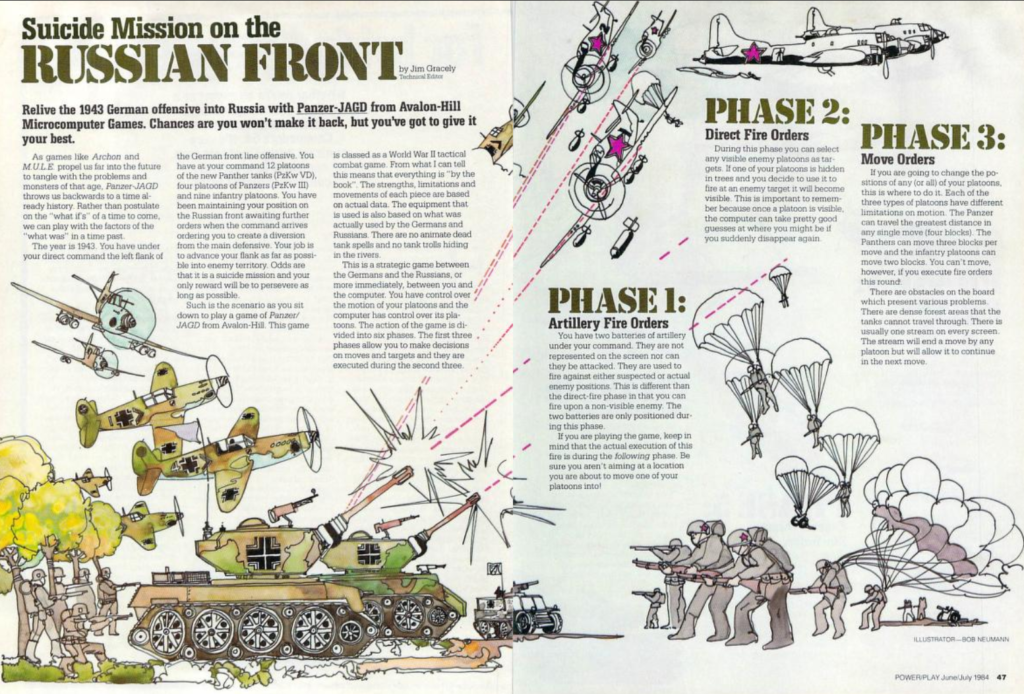
The review that resonates most with me comes from Computer Gaming World (December 1984). After a scathing review (repetitiveness is the sorest point), Jeff Seiken concludes : “As the game stands now, Panzer-Jagd simulates tactical combat about as well as Electronic Battleship portrays naval warfare. Garners interested in tactical warfare would be better advised to spend an additional $10 or AH’s TAC for SSI’s Combat Leader.” I did not love either of those games, but I still concur. Alas, another short review column is appended to the main one, in which Matthew Costello called Panzer-Jagd “an exciting computer simulation“.
Once again, the frustrating pattern of some US reviewers loving every wargame they could put their hands on is confirmed. Next, I will move back to the UK, where the pattern is quite the opposite!